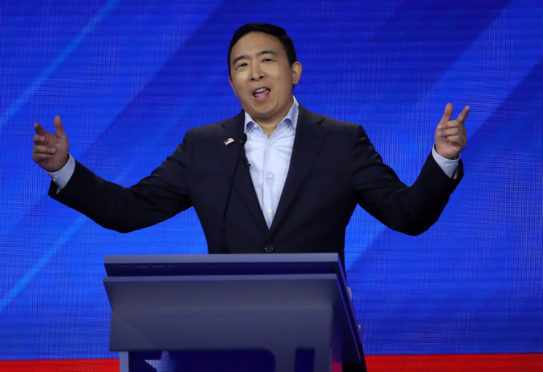Westminster MPs returned, some dragged screaming and kicking, to work last week.
It was noticeable even after such a short break how standards in the chamber have slipped. However, I am not referring to the dreadful use of language and name-calling in which they indulged. I mean the declining dress code of some members; the men in particular. What has happened to the shirt and tie convention? It now appears commonplace for male MPs to speak in the chamber without a tie.
I am not alone in my complaints on this issue. Former Presiding Officer of the Scottish Parliament, Tricia Marwick, has raised the matter on Twitter. “Is it just me or does anyone else think that when on ‘duty’ male politicians should wear a shirt and tie?” she asked. “I am fed up seeing open-necked shirts. Before we know it it will be T-shirts.” She is correct. In my opinion, the open-necked shirt is the start of a slippery slope to slovenliness.
But the former PO’s remark brought a mild rebuke from former Chief Medical Officer for Scotland Sir Harry Burns. Sir Harry, now professor of global public health at Strathclyde University, pointed out that a recent study suggested that men who button their shirts up to the neck and put on a tie reduce the blood flow to their brains by around seven per cent. “I think we can agree that, given the state of some male politicians’ brains, they need all the blood they can get,” he added.
In fact, the study, published last year by the European Society of Neuroradiology, stated, “Negative cerebrovascular effects can be expected by compressing jugular veins and carotids by a necktie. In many professions, a special dress code including a necktie and collared shirt is mandatory although little is known about the effect of this socially desirable strangulation.” The study found significant reduction in “cerebral blood flow” when tie wearers were measured against men wearing open-necked shirts.
However, even if we accept the study’s findings, I choose to demur. At work, I have always worn a shirt and tie and, in charge of a branch newspaper office some years ago, I ordered my male colleagues to smarten up. I pointed out that when they called at a house to speak to someone, the householder would be unlikely to remember the journalist’s name but would certainly remember the name of the newspaper for which he worked. When he – and I was referring in this case to male colleagues – knocked on a door, he was representing the newspaper and it was his duty to make a good impression.
I freely admit that the tie is a strange piece of clothing, with no obvious purpose other than decoration. Its history dates back to France in the 1600s. During the 30-years war, the French employed mercenaries from Croatia, who wore a piece of cloth around their necks to hold the tops of their jackets together. King Louis liked the look and copied it. The fashion was then taken up by the rest of the French court. They named the piece of cloth a “cravate” – a combination of the French name for Croats, Croates, and the Croatian name for themselves, Hrvati.
The cravat, often difficult to tie, was gradually replaced by the necktie in the mid-19th century and gained widespread popularity in the 20th. Perhaps its biggest boost was when the then Prince of Wales, later King Edward VIII, revealed a new, more stylish knot – the Windsor. This was quickly adopted as the smartest way to knot a tie. Indeed, it is how I still wear my ties today, though mathematical research has shown that there are no less than 85 different ways to knot a tie.
Mind you, the slip in standards at Westminster, and at Holyrood too, appears to be a reflection of what is happening in the wider world. Many companies, such as Apple, Microsoft and IKEA, actively oppose the wearing of ties at work. Many more have now adopted a “dress-down” code for Friday working. And the trend for tie-less politicians has crossed the Atlantic. Democratic presidential candidate Andrew Yang recently wore an open-necked shirt during a TV debate with other 2020 hopefuls. The fact that he was the only male candidate not sporting a tie was the main talking point on social media following the programme.
Later this month – the 18th to be exact – is International Tie Day. It passes almost without notice in this country, but elsewhere, in Croatia for example, it is widely celebrated. In my lifetime, I have gone from wearing skinny ties to kipper ties, then back again. I no longer have to wear a suit, collar and tie every day, but on the 18th I’ll proudly celebrate International Tie Day with my old Aberdeen University tie round my neck. And if it reduces the blood to my brain by seven per cent, I’m sure I’ll survive the loss.
Campbell Gunn is a retired political editor who served as special adviser to two First Ministers of Scotland











